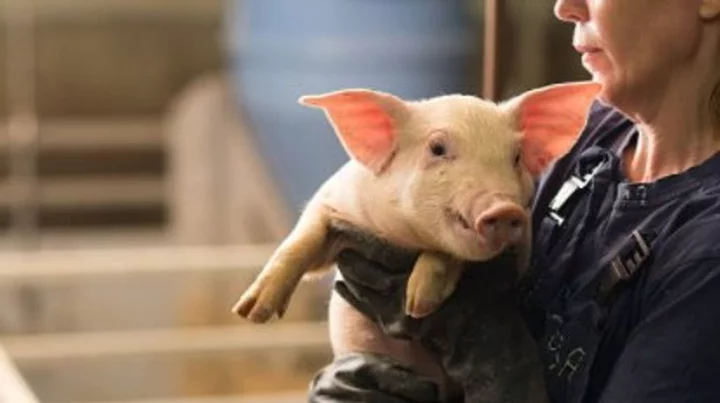
Scientists grow human kidneys inside a pig for the first time
Scientists have grown human kidneys in pigs, for the very first time. Researchers at the Guangzhou Institutes of Biomedicine and Health, Chinese Academy of Sciences and Wuyi University created human-pig chimeric embryos containing a combination of human and pig cells. When they transferred into 13 surrogate pig mothers, they developed kidneys that contained mostly human cells at a rate of 50 to 60 per cent, giving hope for potential transplants in the future. “Rat organs have been produced in mice, and mouse organs have been produced in rats, but previous attempts to grow human organs in pigs have not succeeded,” said the senior author Liangxue Lai. “Our approach improves the integration of human cells into recipient tissues and allows us to grow human organs in pigs.” The kidneys were not entirely human as they included vasculature and nerves made mostly from pig cells, meaning they could not be used for transplantation in their current form, but it is still a pretty impressive step. And apart from the kidneys, the embryos were dominated by pig cells, with very few human cells in the brain or central nervous system. Making brains using human and pig cells is very controversial for ethical reasons, so there are tight regulations for this kind of research. Meanwhile, pig cells tend to outcompete human cells during development, so previous experiments have created embryos that are almost entirely pig. The latest work, published in Cell Stem Cell, overcame this by genetically engineering a single-cell pig embryo so that it lacked two genes needed for kidney development. This created a gap within the embryo that could be filled by human cells. “We found that if you create a niche in the pig embryo, then the human cells naturally go into these spaces,” said Prof Zhen Dai of Guangzhou Institutes of Biomedicine and Health, another senior author. The scientists said that being able to incubate a fully human kidney inside a pig would be likely to take many years. “We would probably need to engineer the pigs in a much more complex way and that also brings some additional challenges,” said Miguel Esteban, also of the Guangzhou institute and a senior author. A central challenge would be to allow human nerves and vasculature to develop within the target organ without nerve cells developing in the central nervous system that could lead to a humanised brain. “Even theoretically it’s not clear how you’d do that,” said Ilic. Sign up to our free Indy100 weekly newsletter Have your say in our news democracy. Click the upvote icon at the top of the page to help raise this article through the indy100 rankings.
2023-09-08 19:49

Human embryo created without using sperm or eggs
Scientists in Israel have created a model of a human embryo from stem cells, without using sperm, eggs or a womb. A team at Israel's Weizmann Institute of Science made the model, which resembles an embryo at day 14, when it acquires internal structures but before it lays down the foundations for body organs, and the work was published in the journal Nature. But the scientists involved said it would take a long time yet to create an embryo from scratch. Team leader Jacob Hanna said the team took stem cells derived from adult human skin cells, as well as others cultured in the lab, then reverted the cells to an early state.They then manipulated them to make a model of an embryo, rather than an actual or synthetic one. "The question is, when does an embryo model become considered an embryo? When that happens, we know the regulations. At the moment we are really, really far off from that point," Hanna said. However, they said the work could open the door to new ways to test the effect of drugs on pregnancies, better understand miscarriages and genetic diseases, and maybe grow transplant tissues and organs. "They are not identical. There are differences from human embryos, but still, this is the first time, if you open an atlas or a textbook, you can say - yeah I can really see the similarity between them," said Hanna. "In about 1 percent of the aggregates we can see that the cells start differentiating correctly, migrating and sorting themselves into the correct structure, and the farthest we could get is day 14 in human embryo development," he said. Their next goal, Hanna said, is to advance to day 21 and also reach a threshold of a 50 per cent success rate. Magdalena Żernicka-Goetz, a professor of development and stem cells at the University of Cambridge, said the study joins six other similar human embryo-like models published from teams around the world this year, including from her lab. "None of these models fully recapitulate natural human development but each adds to ways in which many aspects of human development can now be studied experimentally," she said. Sign up to our free Indy100 weekly newsletter Have your say in our news democracy. Click the upvote icon at the top of the page to help raise this article through the indy100 rankings.
2023-09-08 18:26
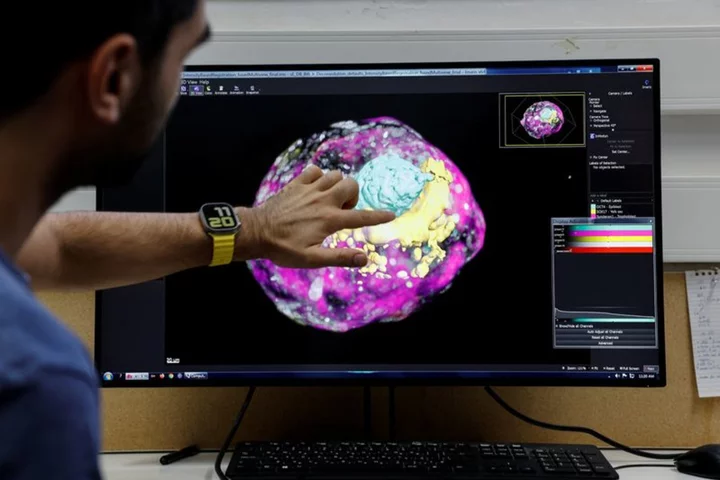
Israeli scientists create model of human embryo without eggs or sperm
REHOVOT, Israel Scientists in Israel have created a model of a human embryo from stem cells in the
2023-09-08 00:56
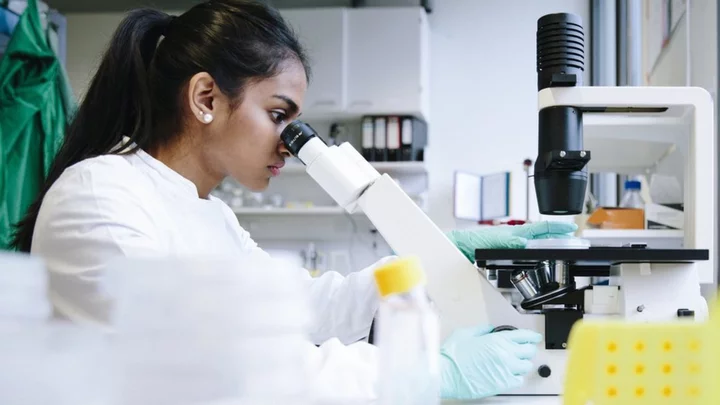
UK rejoins EU science research scheme Horizon
UK-based scientists and institutions will have access to the £85bn fund from today.
2023-09-07 16:50

Britain rejoins EU's Horizon science programme with "bespoke" agreement
LONDON Britain announced on Thursday it would rejoin the European Union's flagship Horizon science research programme in a
2023-09-07 14:27
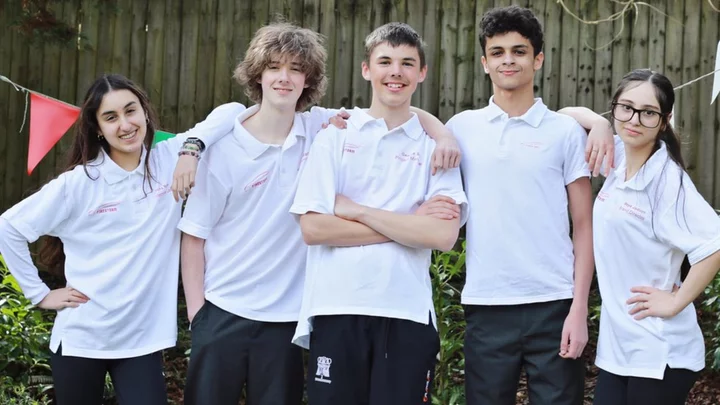
F1: Cardiff teens aim for glory in school competition
Five school pupils have reached the finals of an internationally renowned Formula 1 competition.
2023-09-07 14:15
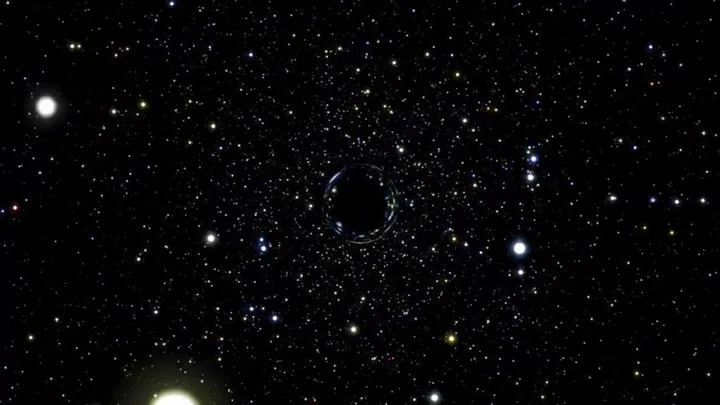
Scientists confused after black holes 'burp up' previously destroyed stars
It feels like every time black holes are discussed and studied by the scientific community, there are new findings that blow our tiny minds. It’s been revealed that black holes actually regurgitate or “burp up” the stars that they eat years after the event. Experts made the discovery by studying tidal disruption events (TDEs). These events take place when stars are close enough to supermassive black holes, to be destroyed by the process of spaghettification. Studying these moments over a number of years after the black holes seemingly swallowing stars with no trace, the experts found that up to 50 per cent of them "burp up" the remains. Yvette Cendes is a research associate at the Havard and Smithsonian Center for Astrophysics and head author on the study. Speaking to Live Science, she said: "If you look years later, a very, very large fraction of these black holes that don’t have radio emission at these early times will actually suddenly 'turn on' in radio waves. "I call it a 'burp' because we’re having some sort of delay where this material is not coming out of the accretion disk until much later than people were anticipating." The material was re-emitted between two and six years from 10 out of 24 black holes which were studied by Cendes and the team. It has the potential to change the way the scientific community thinks about black holes. "There was a second peak, the two black holes re-brightened, and that's completely new and unexpected," Cendes said. "People were thinking that you'd have one outflow, and then it's kind of done. So this observation means these black holes can 'turn on' and then 'turn on' again." Meanwhile, a low intergalactic grumbling is emanating from deep space, according to scientists – and again, it’s black holes that are providing us with new discoveries. Astronomers say they detected the first-of-their-kind low frequency ripples, described as a “cosmic bass note” of gravitational waves, which is thought to be caused by supermassive black holes merging across the universe. Sign up for our free Indy100 weekly newsletter Have your say in our news democracy. Click the upvote icon at the top of the page to help raise this article through the indy100 rankings
2023-09-07 00:21
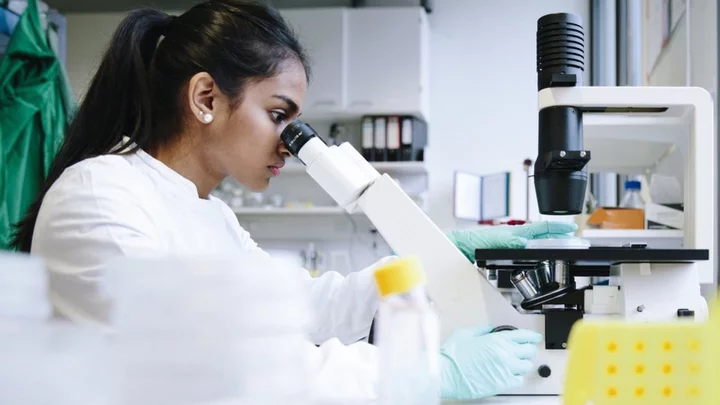
UK expected to re-join Horizon science scheme
An announcement is likely soon on the UK becoming a fully-fledged member of the multi-billion euro programme.
2023-09-06 23:46
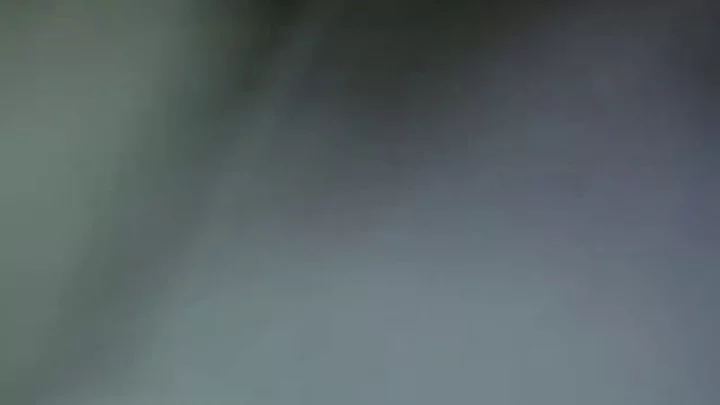
Frozen humans could be brought back to life in next 50 years claims expert
Experts may have found a way to resurrect frozen humans in 50 to 70 years. It comes after a cryonics company was able to revive an extinct worm from 46,000 years ago, leading them to believe the method could be applied to humans. "Cryonics is a scientifically based, legal technology for preserving humans and animals in a state of deep cooling in the hope that in the future they will be resuscitated and, if necessary, cured and rejuvenated," Russian cryogenics company KrioRus explained. "For legal reasons, human cryopreservation can be carried out only after legal death." KrioRus shared how the dead patient is "immersed into a low-temperature medium where almost all chemical reactions are stopped." The first ever cryopatient, American professor James Bedford, has been preserved for almost 50 years "with no sign of change or deterioration." "In the prognosis of modern science, a cryopatient can indeed be someday revived and return to life," they said. Many more people have opted to freeze their deceased pets, with costs dependent on pet size, species and distance to the facility among other factors. A dog is said to cost around $25,000. The company claims to have cryopreserved 92 people but disclaimed that for humans to be resurrected, there must be significant progress in the medical field. "Cryobiological laboratories are few, there are no large ones at all," CEO Valeriya Udalova told MailOnline. "Even the famous laboratory 'XXI Century Medicine' is a small organization." She continued: "But even in such a deplorable situation, remarkable experiments have already been made, for example, on reversible cryopreservation of a rat kidney using gas persufflation with nanoparticles and induction heating." Sign up for our free Indy100 weekly newsletter Have your say in our news democracy. Click the upvote icon at the top of the page to help raise this article through the indy100 rankings.
2023-09-06 21:15
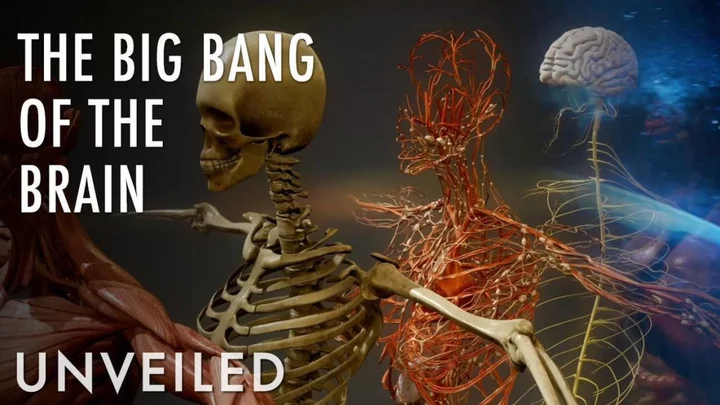
Curly hair may have been critical to human evolution
Curly hair may have been absolutely critical to humans evolving millions of years ago, scientists have discovered. In fact, having curly hair could have been the key reason as to why humans developed, grew taller and came to have larger brains. It’s all to do with regulating body temperature, according to a new study by researchers at Penn State University. Given that hair can help to protect the head from the sun’s rays, it’s thought that thicker, curlier hair types could have been key to human life progressing in Equatorial Africa. Scientists recreated the kinds of conditions that early humans would have experienced, using wigs featuring different hair types on models. They found that curls were most effective in keeping the models cool in an environment measuring 86 degrees Fahrenheit (30 degrees Celsius) and 60 per cent humidity. Tina Lasisi is the study's lead author. She spoke to Newsweek about the findings and said: "We hypothesized that tightly curled scalp hair would provide some benefits, but the extent of these benefits was uncertain. "Previous studies on mammalian coats have shown that hair can limit the amount of sunlight reaching the skin, but we were particularly surprised by the significant reduction in solar heat radiation impact provided by tightly coiled hair.” The reduction in heat caused by tight curls could have led to the development of larger brains. "Once humans developed large brains, they could employ other behavioral and social strategies to cope with heat, potentially diminishing the relative advantage of curly hair," she said. "This could have led to a diverse distribution of hair textures worldwide. Furthermore, since straight hair better retains heat, populations in colder environments may have experienced selective pressure for straight hair." She added: "Future research should aim to answer these questions by incorporating our data into mathematical models of human physiology or conducting experiments with human subjects who have different hair textures to examine the impact on their thermal regulation.” Sign up for our free Indy100 weekly newsletter Have your say in our news democracy. Click the upvote icon at the top of the page to help raise this article through the indy100 rankings
2023-09-06 00:50

Mysterious 'golden egg' discovered at the bottom of the ocean leaves scientists baffled
A mysterious golden object has been found at the bottom of the ocean by scientists exploring the Pacific Ocean and it has left them baffled. The discovery was made on 30 August when a team of experts from the National Oceanic and Atmospheric Administration (NOAA) were taking a closer look at an underwater volcano 250 miles off the coast of Alaska. Experts, and members of the public viewing the live stream, caught a glimpse of the unusual gold orb two miles beneath the surface lodged into the side of the volcano and were left puzzled over what it could be. It was found thanks to the NOAA’s Seascape Alaska 5 expedition that is currently mapping the seafloor of the Gulf of Alaska. Those who made the discovery at the foot of the volcano also noted there was a mysterious hole in the side of the orb, with one researcher suggesting on the live stream that “Something tried to get in...or to get out”. Scientists bantered back and forth about what the egg-like object could be and ultimately decided to take a sample that could be analysed. The texture of the orb was not as they had expected and was more of a silky, delicate consistency. An arm from the robotic vehicle was used to suction the orb in order for scientists to determine its origins with laboratory testing. The NOAA Seascape Alaska 5 expedition is due to end in mid-September and aims to fill the gaps that experts have about the sea beds off the USA’s west coast. It began on 24 August in Kodiak, Alaska and will come to an end in Seward, Alaska on 16 September. Sign up to our free Indy100 weekly newsletter Have your say in our news democracy. Click the upvote icon at the top of the page to help raise this article through the indy100 rankings.
2023-09-05 22:57
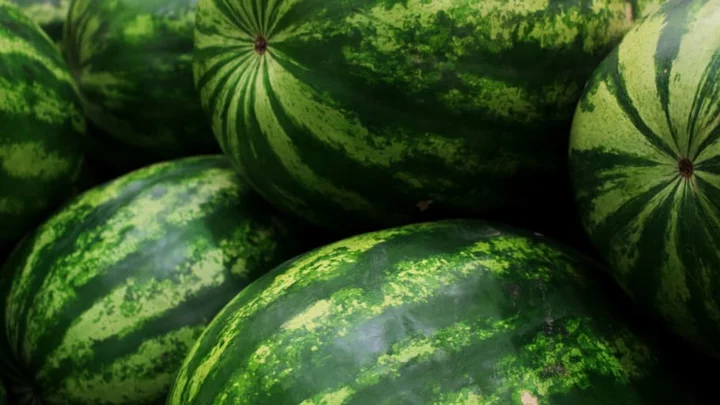
Time Lapse Video Reveals How Long it Takes a Watermelon to Decompose
If you've ever wondered how long it takes a whole watermelon to decay, this timelapse video has the answer.
2023-09-05 05:29
